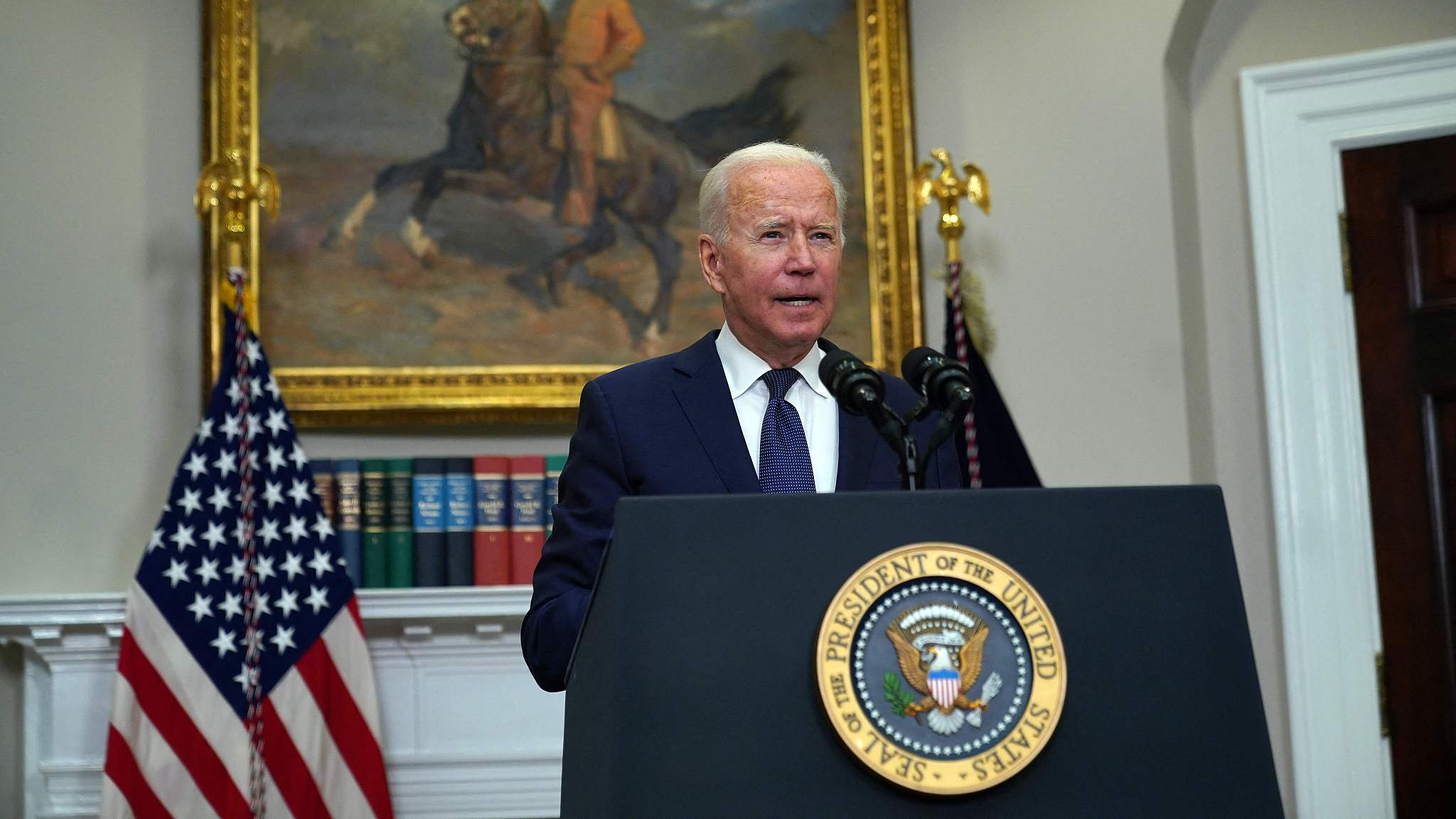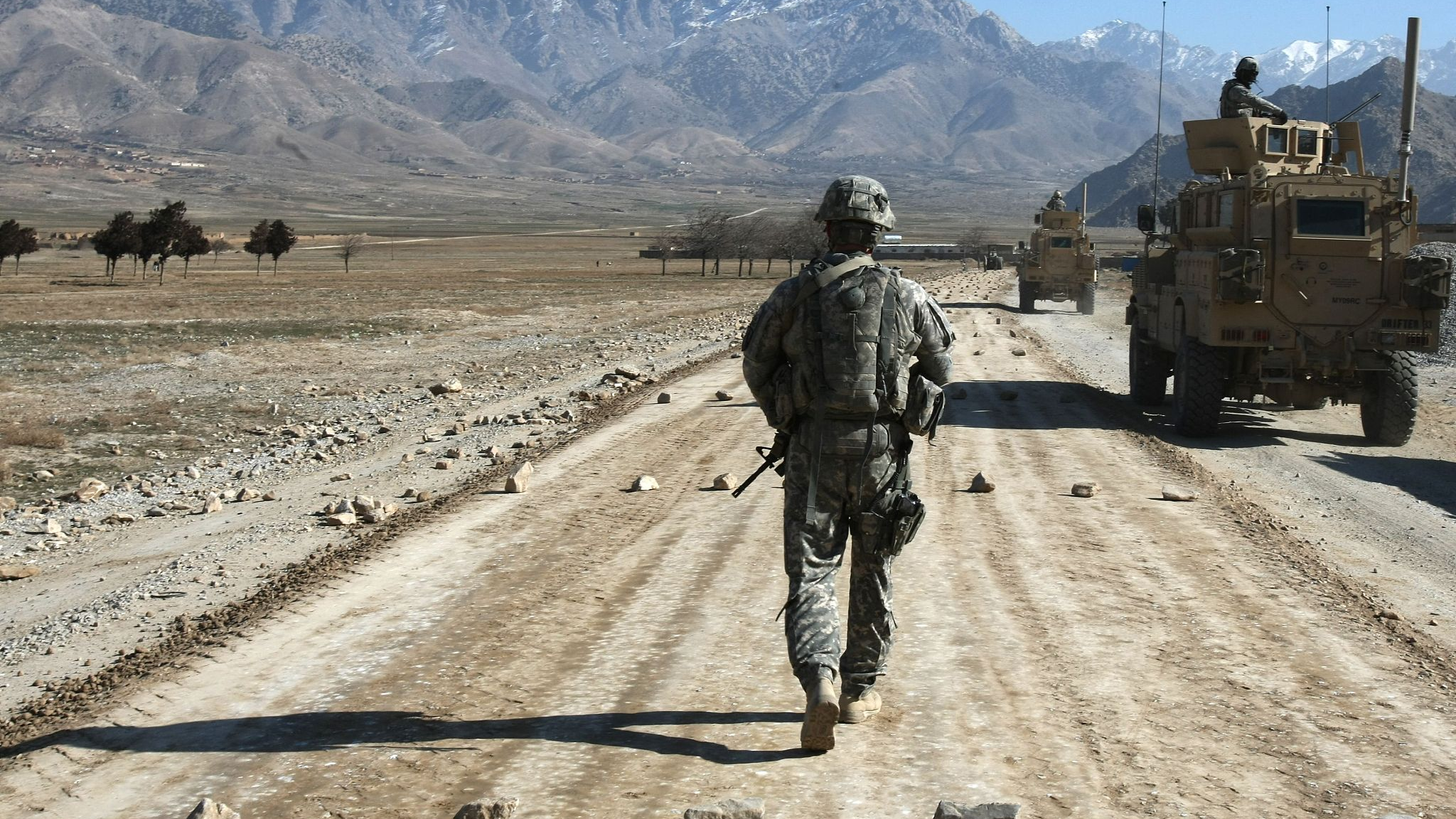
U.S. President Joe Biden speaks during an update on the situation in Afghanistan and the effects of Tropical Storm Henri in the Roosevelt Room of the White House in Washington, D.C., August 22, 2021. /CFP
U.S. President Joe Biden speaks during an update on the situation in Afghanistan and the effects of Tropical Storm Henri in the Roosevelt Room of the White House in Washington, D.C., August 22, 2021. /CFP
Editor's note: Wang Jin is a research fellow at Charhar Institute and the Northwest University of China. The article reflects the author's opinion and not necessarily the views of CGTN.
During the past two decades, the U.S. has spent $2 trillion in Afghanistan with the aim of not only defeating the Taliban, but also establishing a democratic and stable Afghan central government. However, after 20 years, the U.S. left Afghanistan with neither goal realized. It even has to withdraw its diplomatic and military personnel with the permission from Taliban, which was once defined by Washington as a "terrorist group."
Compared to Afghanistan's relatively weak economy, Washington's expenditure in Afghanistan was very impressive. In 2020, the GDP of Afghanistan was about $19 billion, which is only 1 percent of U.S. total spending in Afghanistan during the past two decades. How could the U.S., with such overwhelming superiority, finally lose the Afghanistan war? Where was this money spent?
In the modern world, invasive war has become too expensive for any state to bear. Actually, in the modern world, one state, even with the most obvious material and tangible resources, may find it difficult to win an invasive war against another state. After the end of World War II, and with the rise of nationalism and the modernization of communication technologies, it is very difficult for any state to reap more benefits through intervening in other states' internal affairs.
For the U.S., its invasion of Vietnam not only led to a war, but also left a heavy burden for the U.S. to reconstruct the political, social and military structure of south Vietnam. The spending of Washington on the battlefield against north Vietnam and the reconstruction process in south Vietnam finally caused U.S. strategic collapse in the Vietnam War.
Similarly, the Soviet Union's invasion of Afghanistan in 1979 came with the underestimation of the complexities of Afghanistan, finally leading to the Soviet Union's awkward withdrawal in 1989.
History usually repeats itself, even with different appearances. In 2001, the U.S. invaded Afghanistan with the hope of eliminating terrorism and extremism in the country through copying the U.S. democratic political structure. However, similar to what happened in Vietnam, the U.S. not only needed to fight against Taliban, but also to help reconstruct the Afghan government and military, which wasted massive amounts of money in the country. This has become a huge burden to the U.S. economy.

A U.S. soldier walks along a road under construction near Bagram, about 60 kms from Kabul, January 11, 2020. /CFP
A U.S. soldier walks along a road under construction near Bagram, about 60 kms from Kabul, January 11, 2020. /CFP
On the battlefield, to continue fighting the Taliban and other local military forces, the U.S. government had to pay vast amounts of money to keep its military presence in key areas. On the political side, the U.S. has to spend money to construct an Afghan political structure that would be loyal to the Afghan government.
Along with the past two decades, the stocks of U.S. major weapon companies grew eight times greater than the size of 2001. This also reflects the fact that the weapon companies have received substantial financing from the U.S. defense department.
Meanwhile, the reputation and scale of the private military companies, such as the Black Water, also have been expanding rapidly during the past two decades. Many military operations in Afghanistan, such as the monitoring of key areas, analyzing information, training personnel and maintaining logistics were handed over to several private military companies through contracts signed with U.S. defense departments. The benefits nourished the growth of these private military companies and a large private military staff.
However, the $2 trillion caused the most shameful strategic failure for the U.S. in the 21st century. While some weapon and military companies were the real winners of the longest war in U.S. history, the people in Afghanistan became the victims that suffer the most.
(If you want to contribute and have specific expertise, please contact us at opinions@cgtn.com.)

